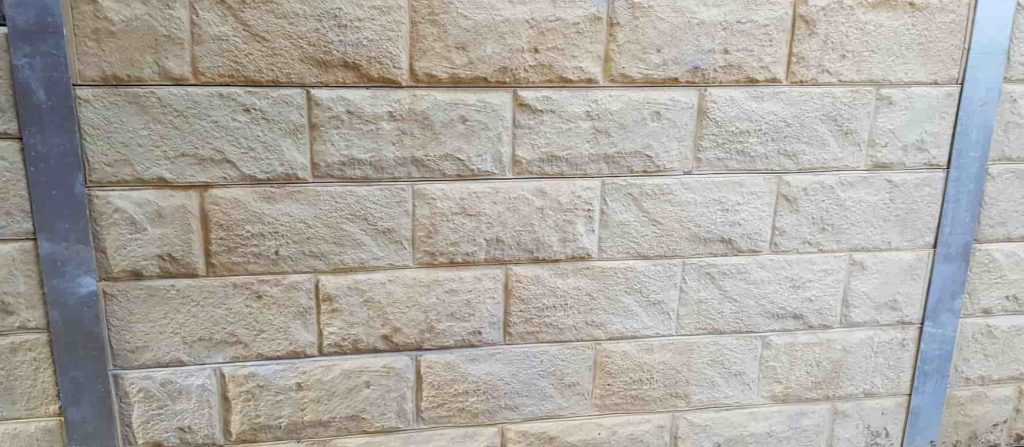Introduction: Building a Greener Future with Keeping Walls
In today's world, where ecological issues are at the leading edge of social discussions, it's essential to explore how numerous markets contribute to sustainability. Retaining wall builders stand as critical players in this story. Through ingenious materials and eco-conscious practices, they are reshaping landscapes while minimizing their ecological footprint. This post looks into the myriad methods modern keeping wall installers are adopting environment-friendly approaches, ensuring that construction does not come at the expense of our planet.
Spotlight on Eco-Friendly Practices by Modern Retaining Wall Builders
Understanding Eco-Friendly Practices in Construction
Eco-friendly practices describe strategies and techniques that aim to lower environmental damage. In the context of retaining wall building, these methods consist of the use of sustainable products, waste reduction techniques, and energy-efficient processes. However why should keeping wall home builders care about being eco-friendly? The answer is simple: sustainability not just benefits the environment but also improves their reputation and service prospects.
The Function of Retaining Walls in Landscape Management
Retaining walls serve numerous purposes beyond looks; they play a vital role in handling soil erosion and water drain. By implementing eco-friendly practices, retaining wall contractors can enhance these functions while lowering their impact on the environment.
Sustainable Products: The Heart of Eco-Friendly Construction
Concrete Sleepers: A Long Lasting Choice with Less Impact
Concrete sleepers are a popular option among retaining wall builders due to their durability and versatility. They're often made from recycled materials, which helps reduce waste. Using concrete sleepers lessens the need for timber, preserving forests and contributing positively to the ecosystem.
Timber Sleepers: Sourcing Responsibly
While wood sleepers like H beam, wood sleeper, or timber sleeper offer natural beauty and strength, sourcing them responsibly is important. Contractors must ensure that wood originates from sustainably handled forests. This dedication not only protects biodiversity but likewise supports regional economies.
Stone: Nature's Timeless Resource
Stone is another product https://rowanfencecontractoryila.bloggersdelight.dk/2025/02/09/do-it-yourself-vs-professional-retaining-wall-installation-benefits-and-drawbacks/ commonly used in retaining walls. Its long-lasting nature implies fewer replacements in time, making it an environmentally friendly choice. Plus, when sourced in your area, it lowers transport emissions significantly.
Innovative Techniques Employed by Modern Builders
Green Engineering Concepts in Design
Modern retaining wall installers take advantage of green engineering principles to develop styles that mix flawlessly with nature. This approach makes sure that structures support natural environments instead of interrupt them.

Use of Geosynthetics for Soil Reinforcement
Geosynthetics are artificial items that enhance soil stability without intrusive excavation methods. By using geogrids or geomembranes, professionals can minimize land disruption and promote natural plants development around keeping walls.
Minimizing Waste During Construction
Prefabrication Techniques
Prefabrication enables constructing parts off-site before transporting them for assembly at the final location. This approach considerably decreases waste generated throughout standard construction processes.
Recycling Materials
Many contemporary maintaining wall home builders prioritize recycling products whenever possible. For example, remaining concrete can be repurposed into aggregate for brand-new jobs or perhaps reused in landscaping features.
Energy Efficiency in Building and construction Processes
Sustainable Equipment Choices
The equipment utilized by retaining wall contractors can have a significant influence on energy intake. Choosing fuel-efficient equipment or electrical machinery can greatly minimize carbon emissions throughout construction.
Integrating Native Plant Species
Integrating native plant types around maintaining walls assists restore regional environments while providing aesthetic appeal. These plants need less water and maintenance than non-native species, making them a sustainable option for landscaping.
Community Engagement: Educating Clients About Sustainability
Educating clients about environment-friendly practices fosters a culture of sustainability within communities. When clients comprehend the benefits of ecologically conscious choices-- like opting for concrete sleepers or stone-- they're more likely to buy sustainable solutions.
Certifications and Standards for Sustainable Practices
Many companies provide accreditations that recognize sustainable structure practices within the market. Examples include LEED (Leadership in Energy and Environmental Style) certification, which motivates builders to abide by stringent ecological standards.
Case Research studies: Effective Applications of Environment-friendly Practices
Examining effective tasks can influence others within the industry to embrace similar practices. For instance:

- A job making use of recycled concrete sleepers demonstrated expense savings along with ecological benefits. Another case highlighted how using native plants boosted biodiversity around newly built retaining walls.
Economic Benefits of Eco-Friendly Retaining Wall Solutions
Investing in eco-friendly solutions may have an in advance expense however results in long-lasting cost savings through minimized maintenance needs and increased home worth due to improved landscape aesthetics.
Overcoming Difficulties in Embracing Environment-friendly Methods
Despite increasing awareness about sustainability, some challenges continue:
Higher Preliminary Costs: Sustainable materials may have greater initial costs. Limited Accessibility: Not all areas have simple access to sustainable resources. Client Resistance: Some customers may prioritize expense over sustainability initially.However, informing customers about long-lasting advantages can help overcome these objections.
FAQs About Eco-Friendly Practices by Modern Retaining Wall Builders
What materials are best for environmentally friendly keeping walls?- Sustainable alternatives include concrete sleepers made from recycled content, responsibly sourced wood sleepers, and locally sourced stone.
- Look for specialists who display experience in sustainable practices and have pertinent accreditations or favorable reviews regarding their environmental efforts.
- Yes! Many governments offer tax credits or rebates for eco-friendly building and construction projects that promote sustainability.
- Absolutely! Native plants are adjusted to local environments and soils; they usually require less water and upkeep compared to non-native species.
- Effective waste management through recycling methods lessens land fill contributions and promotes resource effectiveness during building projects.
- Yes! Existing structures can typically be upgraded by adding sustainable landscaping features or using greener products when repairs are needed.
Conclusion: The Path Forward Towards Sustainable Retaining Wall Construction
As we've explored throughout this short article, modern-day keeping wall builders hold considerable potential to affect ecological stewardship through their practices-- from choosing sustainable materials like concrete sleepers or stone to using innovative design techniques that bolster eco-friendly health. By concentrating on education and community engagement surrounding these topics, they not just boost their service prospects however likewise contribute favorably towards building a greener future for generations ahead.
Ultimately, accepting environmentally friendly practices is not simply a trend; it's becoming increasingly essential as we browse obstacles associated to environment change and urbanization-- making it essential for each conscientious home builder out there!